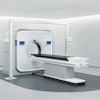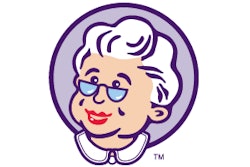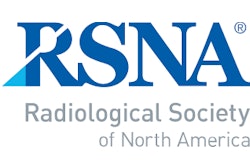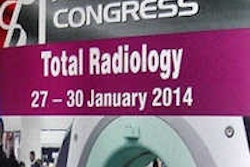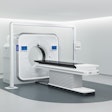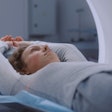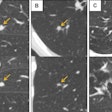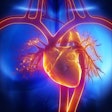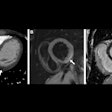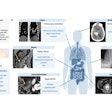After-hours interpretation of body CT examinations by radiology residents shows an accuracy rate similar to that of board-certified radiologists, according to a study conducted at the University of Arizona in Tucson.
Researchers at the university medical center performed a retrospective review of after-hours body CT examinations ordered by emergency physicians to determine if board-certified radiologist interpretation of after-hours exams would significantly alter acute management.
"After-hours coverage of the emergency department is accomplished in many different ways. For example, there may be 24-hour coverage by board-certified radiologists, coverage by teleradiology, and, as is the occasion at many teaching institutions, after-hours coverage is provided by the residents with the cases overread by a board-certified radiologist the next day," said Dr. Adrian Moyer in a presentation at the 2002 RSNA meeting in Chicago. Moyer is a fourth-year radiology resident.
"Despite our best efforts, however, errors in interpretation do occur -- both by board- certified radiologists and residents -- and can generate momentum for a change in the way that coverage is provided. This is particularly evident at teaching institutions, where the residents are often perceived to perform below the standards of care," he said.
From January 2000 to December 2000, radiology residents (PGY2-4) prospectively interpreted 1,412 consecutive CT chest, abdomen, and pelvis exams of 818 patients seen in the emergency department outside normal weekday working hours. The residents evaluated these cases and faxed a preliminary report to the emergency department.
A board-certified radiologist then reviewed all of the cases and reports within a 12-hour time frame, making any necessary additions or retractions. The resident’s preliminary report was then placed into one of three groups by the researchers: agree; insignificant/minor disagreement; or significant/major disagreement. The board-certified radiologist's interpretation was taken as the gold standard for this study.
"We had a fair number of cases that were excluded from the study. Any time a case was reviewed with the resident and the attending side-by-side, (it was) not included. Also, our community hospital and Veteran’s Administration Hospital cases that were shipped to us via teleradiology were not included," said Moyer.
The researchers had a retrospective chart review performed on the cases in which there was a significant disagreement. The team had two board-certified radiologists review the cases and assess whether the disagreement was truly significant; if change in the interpretation would have altered patient management in the acute setting; and if it resulted in an overall change in patient management.
Of the 818 patients, 723 exams (88.4%) were classified as agree, and 95 (11.6%) were classified as disagree. Of the disagreement cases, 66 (7.3%) were classified as insignificant/minor disagreement, and 29 (4.3%) were classified as significant/major disagreement.
The 29 significant/major disagreement cases were broken down further by the researchers. Acute patient care would have been changed in 17 (59%) of the patients had the board-certified radiologist’s final interpretation been given while the patient was in the emergency department. In 12 of the 29 cases (41%), there would have been no change in the acute management.
"Of the significant disagreements, 8 (22.9%) involved missed inflammatory processes of the abdomen or pelvis (for example, appendicitis, diverticulitis), 8 (22.9%) involved missed abdominal or pelvic masses, and 8 were determined to be false-positive reports by the interpreting resident," said Moyer.
Broken down by residency year, there was a 4%, 5%, and 2% disagreement rate between PGY2, 3, and 4 residents, respectively, and the board-certified radiologists. However, there was no statistically significant difference among the classes for those cases requiring a change in treatment.
"As we begin to take call, we’re often times much more sensitive because we’re afraid to miss anything, so we tend to write everything down," Moyer offered in explanation of the lower PGY2 rate.
The team found that the overall significant/major disagreement rate between residents and board-certified radiologists was low, approximately 2.5%. This is similar to interobserver variability data published for board-certified radiologists, according to the researchers.
"Resident instruction in the future may be guided by the types of cases most often missed by residents on call; something which we have found to be very useful in preparing the younger residents for call," Moyer said.
By Jonathan S. BatchelorAuntMinnie.com staff writer
April 4, 2003
Related Reading
Accreditation body sets medical residents' work time limit at 80 hours a week, February 19, 2003
Resident physicians still not getting enough sleep, October 17, 2002
Consumer group says mandatory limits on residents' shifts are needed, October 14, 2002
Murky outlook for resident training in wake of new work rules, August 20, 2002
AMA approves new resident work hour rules, June 21, 2002
Copyright © 2003 AuntMinnie.com
